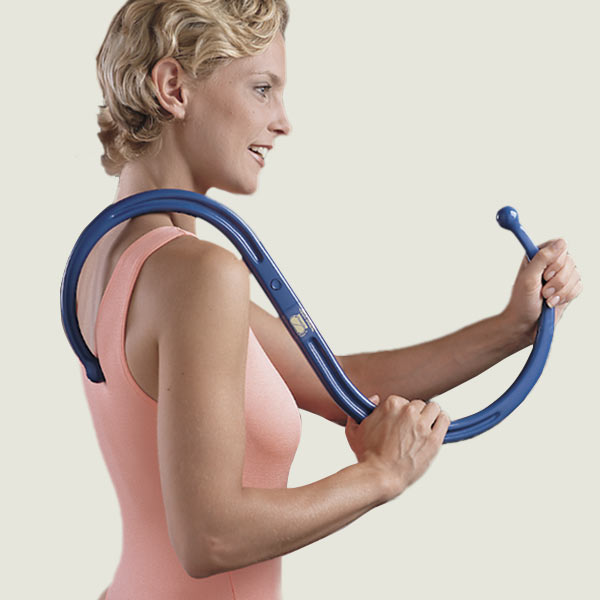How pain relief works and why a short-term fix is not always the best answer.
Pain relief is a decrease in the experience of pain. Your pain is at a certain level, you do something that reduces that pain, and then you are relieved of some, or sometimes all, of that pain. Pain relief is not to be confused with an improved pain tolerance which is an improvement in your psychological, behavioural and emotional response to pain.
Pain relief in a Physiotherapy context is usually associated with manual therapy. Manual therapy includes treatments such as manipulation, mobilisation and massage. Another modality commonly used by Physio’s is acupuncture, alternately called dry needling.
Many have the belief that this sort of therapy “puts things back into place” or “releases tight tissues”, but this doesn’t appear to be the case. Long-lasting changes in the structure of the target tissues of manual therapy have not been identified in clinical studies. Furthermore, studies show inconsistency between clinicians in determining which areas need treatment. It also doesn’t really matter how or where you treat as the choice of technique doesn’t seem to meaningfully effect outcome. You can even apply manual therapy to a completely different area and achieve some pain relief in the part that’s sore!
You may be thinking to yourself, “Lee, I hear what you’re saying but I’ve had it done and it works. I felt much better after they did it, so it’s doing something!”. Well you’re right, it is doing something, just likely not what you think. So what is going on here?
The neuroscience of manual therapy and pain relief.
Manual therapy may have an affect on the tissues that are being manipulated, but this effect is transient (as in while it’s happening) and likely negligible part of the picture. The real effect it has is on the nervous system.
Firstly, if you believe that the therapy you're receiving is fixing the problem and that you don’t need to worry about it any more, your brain coordinates the release of neurotransmitters to dampen the experience of pain. Some of these include endorphins and endogenous opioids that have been shown to be more potent than morphine!
Furthermore, some manual therapists work in a manner that exposes you to a painful stimulus in graduated way so that with time it becomes less painful. This process is called conditioned pain modulation. To be clear though, the painful stimulus becomes less painful but not necessarily the movements that you’re having difficulty with! Basically it just means that your brain gets better at providing pain relief to whatever is being pressed on or rubbed.
Given that manual therapy doesn’t seem to have any lasting effects on the tissues involved, and the benefits are likely related to changes in beliefs and expectations around your pain, what is the point?
Well, you may learn that your pain can be modulated. This insight can be a huge benefit to some people who feel that they have no control over their pain. Secondly, given that there is no real specificity in how it should be applied, a helpful therapist could teach you how to provide your own pain relief so that you don’t need to keep coming back to see them. Things like foam rolling or leaning your weight into a lacrosse ball might be a way for you to achieve some pain relief without having to pay too much money for a health care professional to do it. You could even buy one of these, this fancy looking device is called a Backnobber. Nob on folks!
What are the drawbacks?
Now that I’ve spoken about how manual therapy can be used, let’s talk about how it can’t be used.
Manual therapy, delivered by a therapist or yourself, does not load your tissues in a way that improves tissue health and capacity. If you want to improve the state and function of your tissue’s then you need to use them. By use them, I mean get them moving. As an example if you want to get better at walking, then you’ve got to walk!
You also don’t give yourself the opportunity to learn about pain and how best to respond to it. This brings me back to the important difference between pain relief and improved pain tolerance. The constant seeking of relief for unpleasant sensations doesn’t help build resilience to deal with inevitable future unpleasantness that we can’t relieve. Let’s be clear, i’m not saying that relief is never needed, but I do feel as though we live in a “relief culture” in which the option of just noticing the pain and finding ways to work around it until it passes is not really an option given to those seeking an answer to their pain.
In the same vein, by always moving away from pain you may give the pain more meaning than it’s worth. What you resist, persists. A large part of pain treatment is exploring how it feels and gradually decreasing the bearing it has on your life. Psychologically, it doesn’t appear to be helpful to engage in pain relief strategies that are primarily focussed on lessening the experience of pain when we should be learning that pain is a normal part of the human experience and confidently engaging with it.
What can you do instead?
Another way to achieve the nervous system effects associated with manual therapy is by doing exercise and movement. This is called exercise-induced hypoalgesia and it basically means - less soreness after exercise. The same neurotransmitters associated with the pain-relieving effects of manual therapy are released when you exercise the part that’s in pain, and when you exercise more generally away from the part that’s sore. You can do this by engaging in general exercise of the body as well as specific exercise of the part that’s sore.
Can you see how this sounds very similar to how manual therapy works despite there being quite clear differences in how the tissues are involved? On one hand the tissues are being moved because you are using them and on the other the tissues are being moved because someone else is moving them for you. Think of how rich the movement experience is when you do it, compared to the movement experience delivered by someone else. They can’t move you the way that you move you.
The similar theme between the two options is that you have a brain that is learning that the sore part is being treated and no longer poses a threat, so it flushes the system with pain-modulating neurotransmitters.
Furthermore, remember how I spoke about conditioned pain modulation and how over time the pushing and rubbing becomes less painful? Well, conditioned pain modulation in a movement setting goes hand in hand with a graded-exposure to the movements and activities that you are having difficulty with.
Just in the same way that someone pressing on your body gets less painful with time, so too does performing a movement that you’re currently unable to do due to pain. Therefore, shouldn’t we get straight to it and start to challenge the body in the way that it will need to be used to do the things that are meaningful for you, outside the clinic?
Despite having some usefulness, pain relief through manual therapy doesn’t appear to have as many benefits as pain relief through movement and exercise. Also, pain relief in the short-term doesn’t always equate to a better outcome in the long-term and at times, shouldn’t be the focus of treatment. Lastly, a focus on improving pain tolerance through changing your psychological, emotional and behavioural response to pain, may be a part of building resilience to ease long-term suffering and this may not be achieved with therapy focussed on pain relief.
This is why sometimes it’s ok to feel the same at the end of the session, even a bit worse, if it’s known to both you and the therapist that it’s because you’re working your way towards an understanding of pain that is helpful and building the capacity of your body so that it can support you in doing the things you want to be able to do.
Bialosky, J. E., Bishop, M. D., Price, D. D., Robinson, M. E., & George, S. Z. (2008;2009;). The mechanisms of manual therapy in the treatment of musculoskeletal pain: A comprehensive model. Manual Therapy, 14(5), 531-538. doi:10.1016/j.math.2008.09.001
Koltyn, K. F., Brellenthin, A. G., Cook, D. B., Sehgal, N., & Hillard, C. (2014). Mechanisms of exercise-induced hypoalgesia. Journal of Pain, 15(12), 1294-1304. doi:10.1016/j.jpain.2014.09.006
Vaegter, H. B., Handberg, G., & Graven-Nielsen, T. (2014). Similarities between exercise-induced hypoalgesia and conditioned pain modulation in humans. Pain, 155(1), 158-167. doi:10.1016/j.pain.2013.09.023
Vigotsky, A. D., & Bruhns, R. P. (2015). The role of descending modulation in manual therapy and its analgesic implications: A narrative review. Pain Research and Treatment, 2015, 292805-11. doi:10.1155/2015/292805



